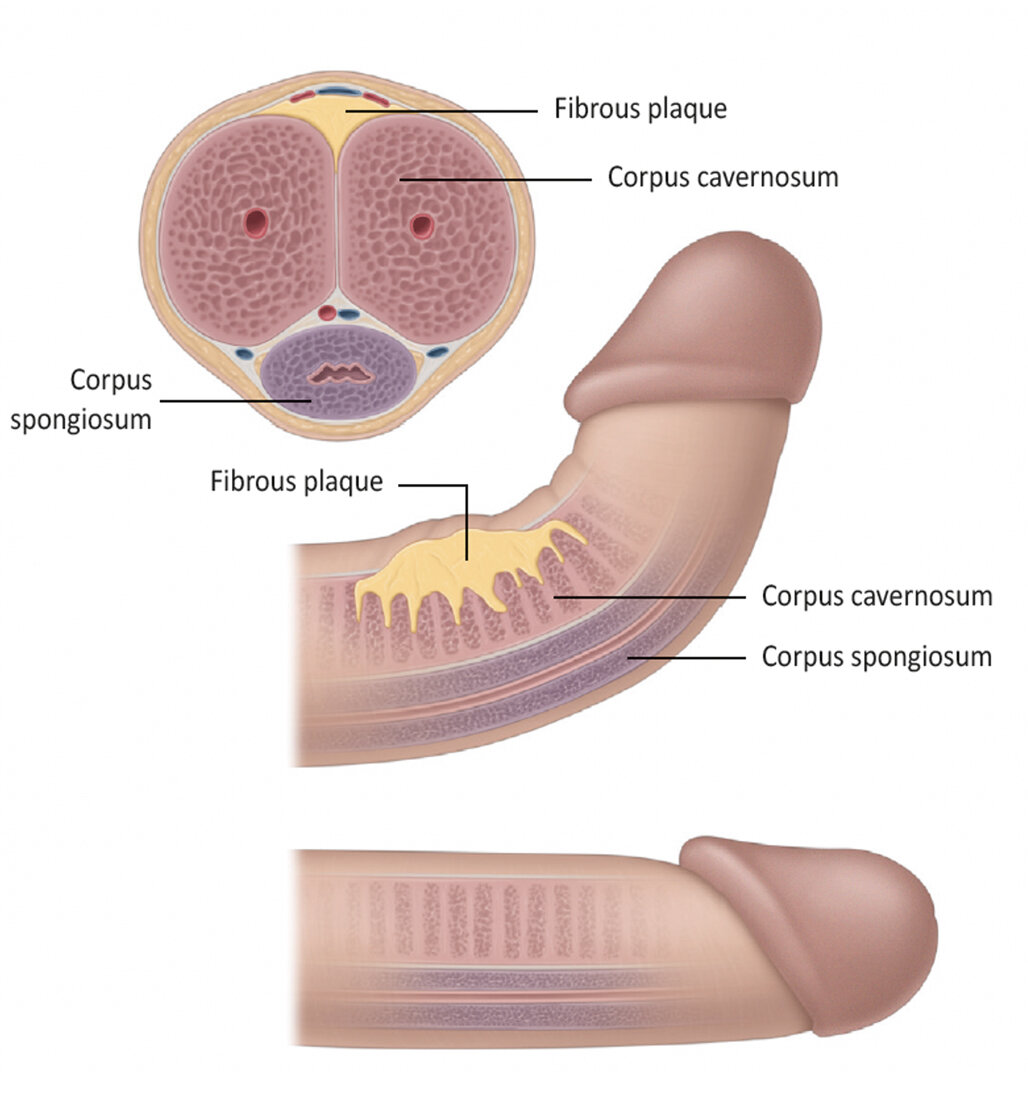Penile Curvature
Figure 1: Curvature of the penis.
What is penile curvature?
While it is common for an erect penis to curve slightly, penile curvature, however, describes an erect penis with an abrupt curve that can cause pain and interfere with sexual intercourse ( Fig. 1).
Some men are born with this condition (congenital penile curvature). In others, it develops over time. Penile curvature that develops later in life is called Peyronie’s disease.
What causes penile curvature?
In Peyronie’s disease, repetitive injury and trauma are believed to cause inflammation in the penis. The tissue surrounding the body of the penis does not heal properly, causing the formation of scar tissue resulting in bending of the penis on achieving an erection (Fig.1). Peyronie's disease is considered a wound healing disorder.
Do I have Peyronie’s disease?
In the beginning (first phase), you might feel pain and nodules under the skin. Over the course of several months, the pain will decrease and you will notice curving of the penis that may prevent sexual penetration and intercourse (second phase).
To confirm the diagnosis, your urologist will conduct a through history and physical examination. They will ask you to bring photos of your bent penis taken from two different directions (from above and side). They may also perform an artificial erection test and / or a penile Doppler ultrasound.
How is Peyronie’s disease treated?
Figure 2: Plication procedure.
After the initial first phase, the curvature stabilises in about two-thirds of patients within several months. In some patients (about 5%), Peyronie's disease resolves without being treated.
Treatment options:
Watchful waiting – if penile curvature is mild and sexual intercourse is not affected
Drug therapy – useful in mild curvature but efficacy is very limited
Penile injections – mild to moderate disease – less efficacy compared to surgery
Surgery - for men with severe penile deformities that make it hard to have sex
Pain in the first phase is generally managed with analgesia and anti-inflammatory medication. The pain must have resolved and the curvature stable for at least 6 months before planning surgery to maximise chance of good outcome.
The type of surgery will depend on your condition. There are 3 types of surgery:
Penile shortening (making the side of the penis opposite the plaque shorter) – most common operation
Penile lengthening (making the side of the penis that curves longer) – rarely performed due to complexity and high chance of erectile dysfunction
Placing a prosthetic device inside the penis
Surgery has a 80-90% efficacy in correcting the curvature of your penis, but it carries risks which you urologist will discuss with you. Penile plication or the Nesbit procedure are the most common procedures done for Peyronie’s disease ( Fig. 2).


